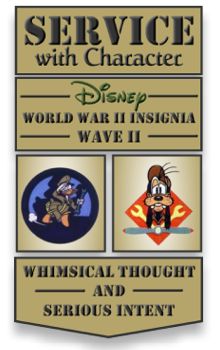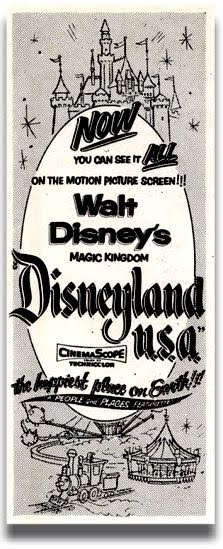Walt Disney began his career as a filmmaker in January of 1920 when he took a job making animated advertisements for the Kansas City Film Ad Company. It was the beginning of a journey that would take a struggling young artist and entrepreneur and eventually mold him into one of the most celebrated icons of 20th century popular culture. The historical map of that journey is an extraordinary one.
Welcome to Studio Geo. These are the places where Walt Disney created his moving pictures:
The Golden Oak Ranch
Over the years, millions upon millions of movie and television viewers have looked upon and admired the beautiful outdoor landscapes and rustic scenery of the Golden Oak Ranch. It is a significant, though almost wholly unrecognized facet of Disney film history.
Movie ranches primarily emerged during the waning years of the silent film era and were widely used throughout the 1930s and 1940s. The popularity of western movies in particular, sent Hollywood producers looking for optimal outdoor shooting locations that were still within a convenient distance from Hollywood. If a film crew could remain within a thirty mile radius of their home studio, they did not have to pay their union workers an out-of-town stipend. Popular locations for the movie ranches included the Santa Monica Mountains, the Canyon Country of Los Angeles and the Simi Hills in Ventura County.
Walt Disney first made use of such a location in 1955 when he leased the 315-acre Golden Oak Ranch for the filming of The Adventures of Spin and Marty. Located in the Santa Clarita area approximately 25 miles north of Disney's Burbank studio, the ranch had earned a filmmaking pedigree more than two decades prior to its playing the role of the Triple R Ranch in the popular Mickey Mouse Club serial. Trem Carr, one of the founders of Monogram Studios, leased the same land for his own self-named studio in 1931, and had his set designer Ernie Hickson build a full scale western town on the property. When the lease ran out in 1936, Hickson purchased land two miles to the west and moved his sets and buildings to the new location. That facility became especially well known when singing cowboy Gene Autry purchased it shortly after Hickson's death in 1952 and turned it into his own Melody Ranch.
Following the exodus of Carr and Hickman, the Golden Oak property reverted to a traditional cattle ranch which was still occasionally used by Hollywood filmmakers. In 1959, Walt decided to purchase the property, seeing it as a valuable asset for his ever increasing slate of live-action productions. Bringing his theme park expertise to bear, he enlisted Disneyland master planner Marvin Davis to upgrade the property. Davis installed two man-made lakes (one of which could double as a river, complete with water pumps to simulate currents), a waterfall and an extensive irrigation system to keep the greenery as green as possible. In subsequent years, additional land surrounding the property was purchased, increasing the ranch to its present-day size of close to 700 acres.
Among the notable early Disney live-action films to use the Golden Oak Ranch: Old Yeller, Toby Tyler, or Ten Weeks with a Circus, The Shaggy Dog, The Parent Trap and Follow Me, Boys! The ranch has hosted countless other Hollywood productions, ranging from classic television programs such as Bonanza, The Virginian and Lassie, to contemporary shows such as Bones, Boston Legal and My Name is Earl.
The name of the ranch refers to the discovery of gold on the property, some seven years prior to the famed California gold rush of 1849. An oak tree close to where rancher Francisco Lopez dug up small gold flakes and nuggets in 1842 still purportedly remains on the ranch and is commemorated with a small plaque.
The Golden Oak Ranch continues to serve both the Walt Disney Company and entire film industry and remains one of the few surviving southern California movie ranches. It has recently added a residential neighborhood set featuring thirteen different houses, each with their own unique architectural style. Work is proceeding on an urban business district set that will include 43 different storefronts and will be complete sometime in 2011.
The Disney corporate web site currently features concept art of a new entrance to the ranch where it is identified as Disney-ABC Studios at the Ranch. According to the site: "Walt Disney personally selected Golden Oak Ranch as the location for segments of his iconic television show, The Mickey Mouse Club. Now, 50 years later, the Disney-ABC Studios at The Ranch project will transform a small portion of Golden Oak Ranch into a state-of-the-art soundstage and production complex." The proposed project would develop 56 of the ranch's 890 acres and include up to twelve soundstages, a warehouse, writers/producers bungalows and a commissary.
Explore the 2719 Hyperion Archives:






































